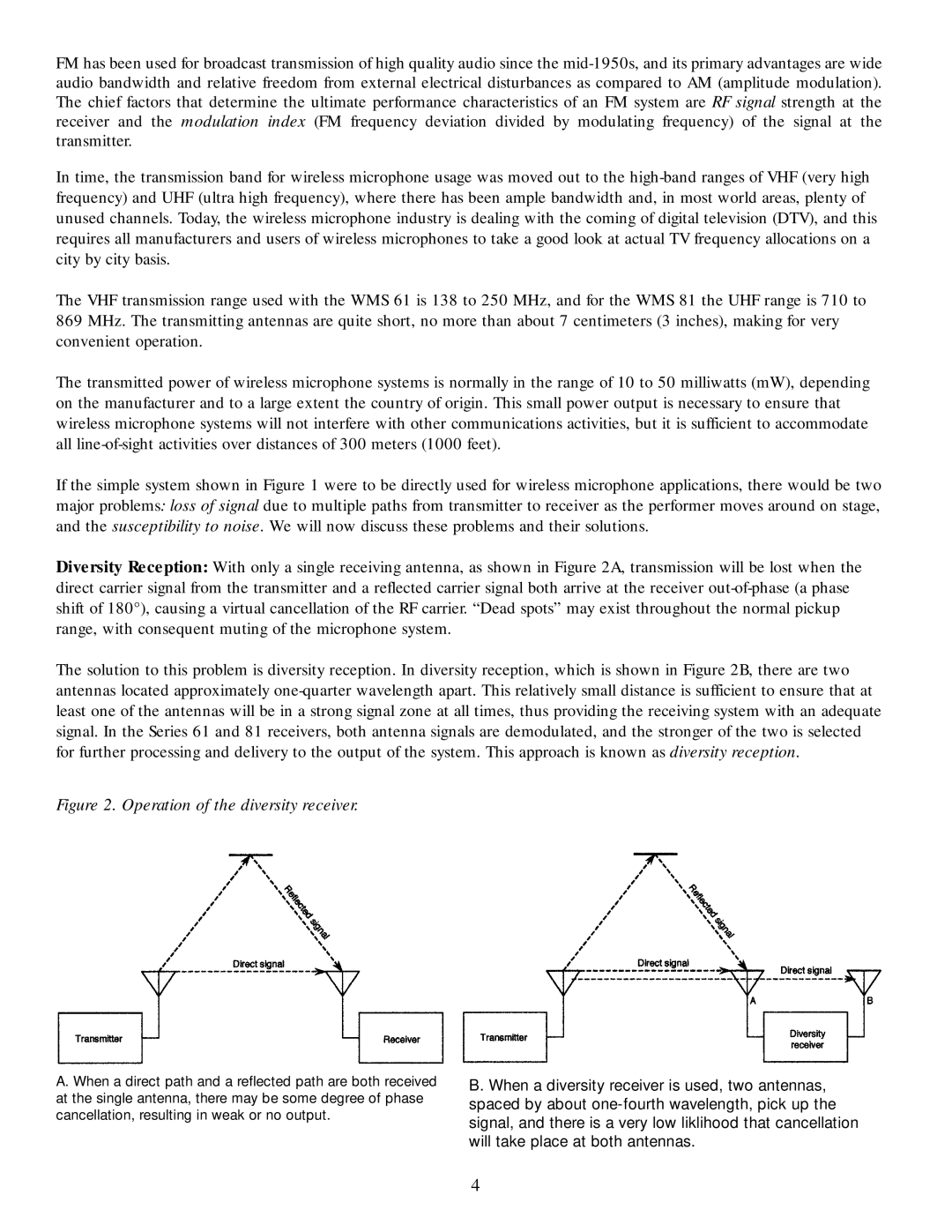WMS61, WMS81 specifications
AKG Acoustics has been a leading name in professional audio equipment for decades, renowned for its innovative designs and superior sound quality. The WMS81 and WMS61 are two notable products in their wireless microphone systems, designed to meet the demanding needs of live performances, presentations, and broadcasting. Both systems offer exceptional performance, ease of use, and advanced technology, making them ideal choices for musicians, public speakers, and audio professionals.The AKG WMS81 is notable for its precision and reliability. One of its main features is its advanced frequency management technology, which ensures a stable connection by automatically scanning for the clearest frequencies. This minimizes the risk of interference during live performances. The WMS81 also includes a high-quality handheld transmitter with an AKG D5 microphone capsule, known for its excellent feedback rejection and vocal clarity. This makes it particularly suitable for dynamic performances where clarity and volume are essential. Additionally, the WMS81 offers a wide frequency response, ensuring that every nuance of the performance is captured.
On the other hand, the AKG WMS61 is a versatile system that provides excellent sound quality and flexibility. It features a compact bodypack transmitter designed for use with lavalier or headworn microphones, providing hands-free operation that is perfect for presentations or theater performances. The WMS61 includes a diverse selection of frequency channels, enabling users to operate multiple systems simultaneously without interference. Its sturdy construction ensures durability, which is essential for the rigors of touring and frequent use.
Both systems utilize AKG's renowned audio technologies, including their high-frequency response and low distortion characteristics. Another key feature of these systems is the automatic frequency selection capability, allowing users to easily find the best available channel in crowded RF environments. They also both come equipped with an efficient battery management system, offering extended operational time to ensure reliability during long events.
In summary, the AKG WMS81 and WMS61 wireless microphone systems are excellent choices for anyone looking for high-quality audio performance in a wireless format. Their robust features, advanced technologies, and user-friendly designs make them suitable for a wide range of applications, from live performances to corporate events. With AKG's commitment to innovation and quality, both systems promise to deliver exceptional sound and reliability for audio professionals and enthusiasts alike.

